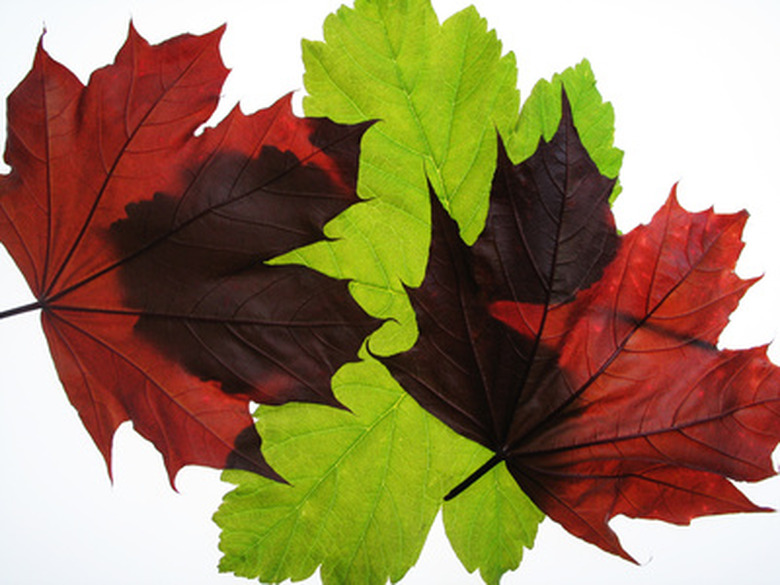Leaf Shape Identification
The words used to describe leaf shapes make it possible to identify plants without pictures. This is especially important in the field, where access to a picture of every single plant you may come across (with a close-up of the leaf structure) isn't always possible. It is possible, however, to use a universal code of descriptors to identify a leaf in detail in the very small space of a field guide. Knowing these identification words also helps if you can't bring a sample back for identification and don't have a camera.
Whole Leaf Forms
Linear leaves are long and slender with parallel sides, and the veins are often parallel. Oblong and elliptic leaves are wider, but oblong leaves still have parallel sides. Lanceolate leaves are lance-like in appearance, while ovate are shaped like a spade. Obovate looks like an inverted ovate leaf, with the tip of the spade-shape at the base. Spatulate resembles an inverted pear, and reniform a mushroom head. Orbicular leaves resemble a wide, inverted heart-shape.
- The words used to describe leaf shapes make it possible to identify plants without pictures.
- This is especially important in the field, where access to a picture of every single plant you may come across (with a close-up of the leaf structure) isn't always possible.
Tips
Leaf tips can be paired with nearly any of the above general forms. Acuminate and acute tips are both pointed, though acute aren't as lance-like as acuminate. Obtuse tips are almost completely rounded, while truncated tips look like the tip has been cut clean off. Emarginate and obocordate tips are both heart-shaped, though obocordate tips have a more severe dip in the middle. Cuspidate and mucronate are both rounded tips that come to a small point at the center, though the tip of the cuspidate is far longer.
Bases
Bases are where the leaf is attached to a stem or the petiole, the tiny stem-like structure that connects the leaf to the rest of the plant. Cordate bases are heart-shaped, with the petiole nestled at the center. Rounded bases are similar, but do not have a dip at the petiole. Squared bases are box-like at the base, while sagittate bases are half-moon shaped, curled around the petiole. The edges of cuneate bases form a "V," while the attenuate form a "Y."
- Leaf tips can be paired with nearly any of the above general forms.
- Cuspidate and mucronate are both rounded tips that come to a small point at the center, though the tip of the cuspidate is far longer.
Margins
The edges, or margins, of leaves are some of the more commonly recognized features. If there are no serrations or undulations at the edges, it's described as entire. Serrated margins look like the blade of a saw. Crenate margins look serrated, but with rounded tips. Lacerate margins have deep, irregular dips into the middle of the leaf. Undulating margins are wavy, forming hills and valleys at the edge.
Examples
Rose leaves would be described as elliptic with serrated margins. The tips would be acute, and the bases (usually) cuneate. Water lily leaves are generally reniform, with entire margins. Their tips are rounded, and their bases are sagittate (in some varieties, cordate). Douglas fir pine trees and ponderosa pine trees both have needles that are linear with entire edges. But the tips differ: Douglas firs have rounded or cuspidate tips and ponderosa pines have acuminate tips.
- The edges, or margins, of leaves are some of the more commonly recognized features.
- Their tips are rounded, and their bases are sagittate (in some varieties, cordate).
References
- "Concise Encyclopedia–Biology"; Thomas Scott; 1996
- Clemson Cooperative Extension: Terminology–Leaf, Twig, and Fruit Characteristics Used in Tree Identification
